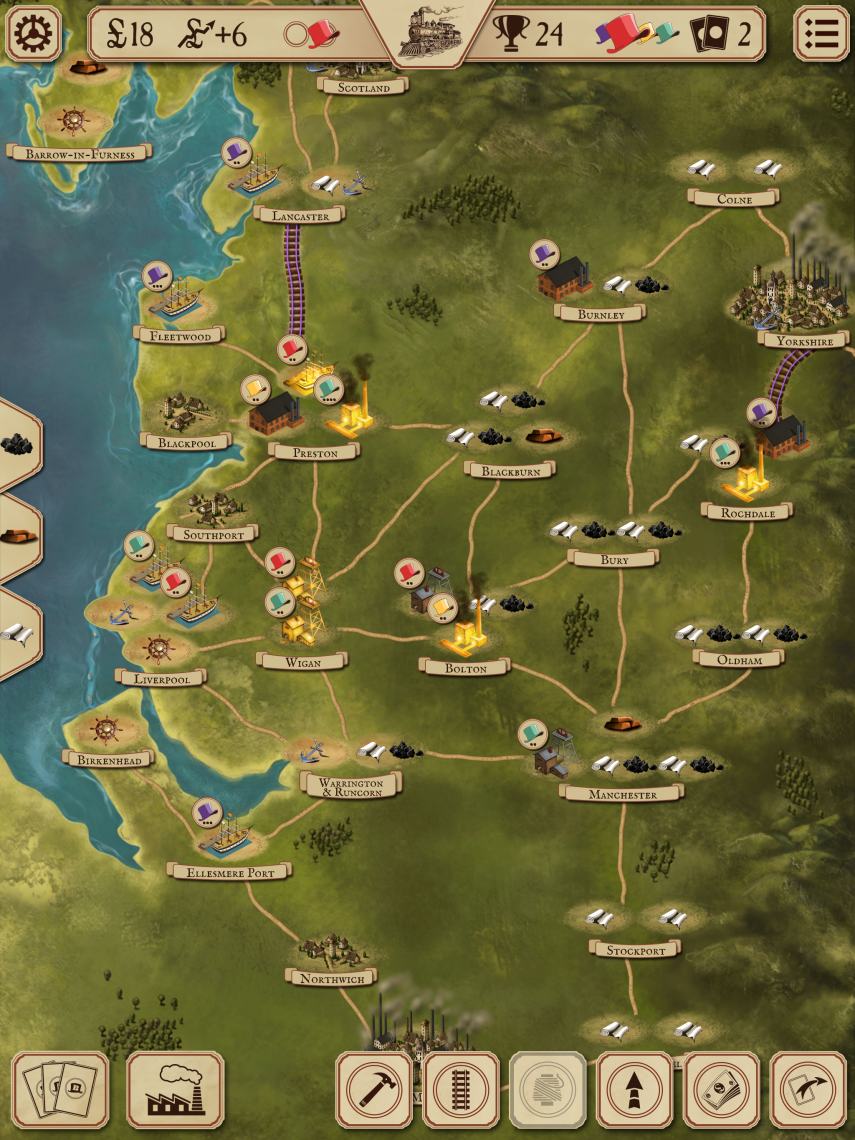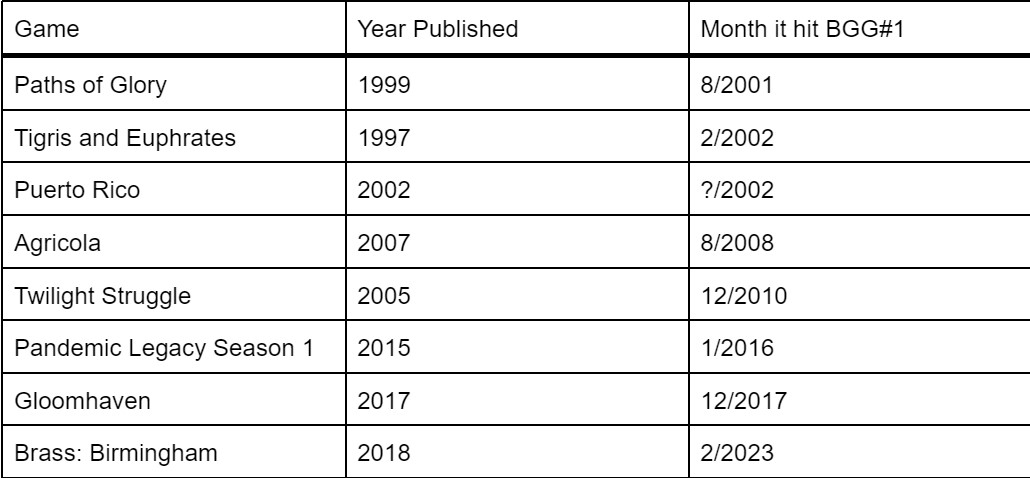Ant Man and the Wasp: Quantumania was #1 at the box office worldwide last week. It’s the third film in the Ant Man series that started in 2015, but “true” fans see it in the context of the Marvel Cinematic Universe (MCU) which started with Iron Man in 2008.
Oh, and Brass: Birmingham is now the #1 game on BGG.
Say what now? What could these two things possibly have in common? Well…
Martin Wallace designed and published Brass in 2007 via his imprint Treefrog. It quickly became a favorite among the tabletop cognoscenti–and deservedly so. Its tight structure melded cardplay, investment, and route-building mechanics with a two-act thematic arc (canals/railroads) tracing the growth and spread of the Industrial Revolution in England in the 18th and 19th centuries.
Brass proved popular enough that Wallace revisited its theme three years later with Age of Industry, which tightened the focus to the railway period but loosened up the cardplay to give players more flexibility. Age of Industry was well-received–if not as popular as its weighter ancestor.

The years went by and Brass became one of many games ported to iOS in 2015, giving fans a way to play against decent AI if living opponents were unavailable, and exposing it to a wider audience.
Then, in 2017, Roxley games announced a Kickstarter for a new edition of Brass (now dubbed Brass: Lancashire or B:L henceforth) as well as a standalone “sequel” called Brass: Birmingham (B:L) set during the same period but introducing new commodities and mechanics. The KS was so successful that this is when I believe someone at Eggertspiele sent an email to Alexander Pfister with the subject line: “Hmmm, maybe do the same thing with Great Western Trail???”
But anyway. The KS for B:L/B:B was wildly successful and retail releases for both sold well. Personally, when I sat down to play them in 2018 my first reaction was: “Jeez, why is everything so feckin’ dark? The new graphic design (even on the “light” boards) was going for a more “sooty” atmosphere appropriate to the dawn of the Industrial Revolution. But in terms of user-friendliness, I’d take the original clean Warfrog/Eagle-Gryphon palette any day.
Moreover, I didn’t see all that much different in B:B compared to B:L. More industries, hence more choices–but overall the same experience. Money was definitely easier to come by in B:B, making it a more forgiving experience than B:L, where one misstep on Turn 1 could put you into a debt spiral you could never climb out of.
But overall, I did not see much space between B:L and B:B. Wallace fans might want to have both, but otherwise either one would do. That was just my opinion. Obviously, many disagreed.
Many, many. Look, I definitely think B:B is a great game. Not in my Top 20, but definitely a great design, very elegant braiding of theme and mechanics. Billy C did a deep dive into it here at the DWP just two years ago.
Moreover, I love Martin Wallace as a designer. For proof, you need look no further than the two part retrospective on his career that I wrote in 2019 (part 1, part 2). He is one of the Greats. No one is more pleased than me to see him get a place in the sun–and exposure to lots of people who will now buy and play the game because they want to try the #1 game. Well, I’m sure Martin’s more pleased than me. And I certainly don’t think he was chasing this–nothing in his past suggests that kind of motivation.
But for a game like B:B to hit the top spot on BGG after all this time gives me pause.
Wait a minute, you say: has it really been that long? What about other BGG #1 games?
I’m glad you asked me this question, Imaginary Reader. Let’s look at the following table I’ve put together of all the #1 games on BGG:

Twilight Struggle and Tigris & Euphrates also took five years to get to #1. But those games rose through the ranks on their own merits, whereas B:B rode on Brass’s coat-tails and name-recognition, and Brass came out the same year as Agricola.
To flog the point home, I’m saying B:B is Quantumania to Brass’s Ant Man–although that is doing a disservice to B:B in that it is a far better game than Quantumania is a movie (its overall metascore on imdb is a whopping 48 as of time of writing). Nevertheless, I remind you, Quantumania IS currently #1 at the box-office.
Quantumania’s popularity stems from being part of the MCU, and the template of wise-cracking superhero movies which Disney now grinds out factory-style because people keep going to see them, despite the increasing tiredness of the genre and deterioration of the writing. There are so many other kinds of stories waiting to be told, but these bloated, CGI-encrusted, fan-service vehicles which haven’t had anything new to say about heroic themes for years now still suck up a huge percentage of studio budgets.

In the same way, the popularity of Brass: Birmingham feels regressive to me. It’s an excellent design–but in one form or another it’s been around for 16 years already (about as long as the MCU, actually). And the story it tells–about plucky entrepreneurs scrapping against each other to the top of the money heap–is simplistic and dated.
Of all the #1’s on the list Brass: Birmingham has the least to say in terms of innovative or fresh ideas about either game mechanics or theme. But clearly a large portion of today’s tabletop audience is ok with that, the same way that millions of people around the world are fine with yet another episode of the MCU.
But hey, Spirit Island is #10, Root is #28 and Pax Pamir 2nd Ed is #40, so…yay?
Harsh but fair.
[…] on the overall board game ranking on BoardGameGeek has been unrelenting. David’s piece on it here helped add some historical context to the entire situation, but most pieces seem to be about […]